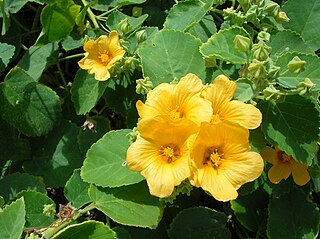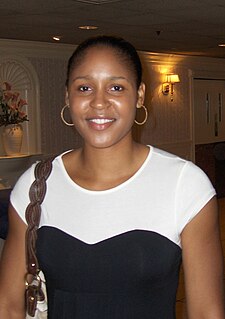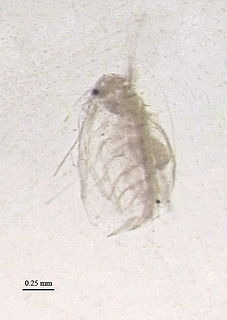
The Swedish International Development Cooperation Agency is a government agency of the Swedish Ministry for Foreign Affairs. Sida is responsible for organization of the bulk of Sweden's official development assistance to developing countries. According to the OECD, 2019 official development assistance from Sweden decreased 4.8% to US$5.4 billion.

Sida rhombifolia, commonly known as arrowleaf sida, is a perennial or sometimes annual plant in the Family Malvaceae, native to the New World tropics and subtropics. Other common names include rhombus-leaved sida, Paddy's lucerne, jelly leaf, and also somewhat confusingly as Cuban jute, Queensland-hemp, and Indian hemp. Synonyms include Malva rhombifolia. It is used in Ayurvedic medicine, where it is known as kurumthotti.

Sida is a genus of flowering plants in the mallow family, Malvaceae. They are distributed in tropical and subtropical regions worldwide, especially in the Americas. Plants of the genus may be known generally as fanpetals or sidas.

The Academic All-America program is a student-athlete recognition program. The program selects an honorary sports team composed of the most outstanding student-athletes of a specific season for positions in various sports—who in turn are given the honorific "Academic All-American". Since 1952, CoSIDA has bestowed Academic All-American recognition on male and female athletes in Divisions I, II, and III of the National Collegiate Athletic Association (NCAA) as well as athletes in the NAIA, other U.S. four-year schools, two-year colleges, and Canadian universities, covering all championship sports. The award honors student-athletes who have performed well academically while regularly competing for their institution.

The Cladocera are an order of small crustaceans commonly called water fleas. Over 650 species have been recognised so far, with many more undescribed. They first appeared before the Permian period, and have since invaded most freshwater habitats. Some have also adapted to a life in the ocean, the only members of Branchiopoda to do so, even if several anostracans live in hypersaline lakes. Most are 0.2–6.0 mm (0.01–0.24 in) long, with a down-turned head with a single median compound eye, and a carapace covering the apparently unsegmented thorax and abdomen. Most species show cyclical parthenogenesis, where asexual reproduction is occasionally supplemented by sexual reproduction, which produces resting eggs that allow the species to survive harsh conditions and disperse to distant habitats.

Pang Sida National Park is a national park in the Sankamphaeng Range, covering 844 square kilometres in the eastern Thai province of Sa Kaeo. It is 28 kilometres north of Sa Kaeo City, the capital of the province. Together with Khao Yai National Park, Thap Lan National Park, Ta Phraya National Park and the Dong Yai Wildlife Sanctuary, it constitutes a part of the Dong Phayayen Forest Complex UNESCO World Heritage Site, covering in total around 6,100 square kilometers.

College Sports Information Directors of America (CoSIDA) is an organization that focuses on professional development and support for sports information directors at all levels. It offers awards, scholarships, and grants in support of SIDs and prospective SIDs in the industry. Since 1952, CoSIDA has bestowed Academic All-American recognition on male and female athletes in Divisions I, II, and III of the National Collegiate Athletic Association (NCAA)—covering all NCAA championship sports—and NAIA athletes.

Crystallina Nera East is a neighbourhood in northeast Edmonton, Alberta, Canada. Subdivision and development of the neighbourhood is guided by the Crystallina Nera East Neighbourhood Structure Plan (NSP), which was originally adopted as the Joviz NSP by Edmonton City Council on September 2, 2011.
Pseudopenilia bathyalis is a species of cladoceran, described in 2004, that lives at depths of 1,900–2,140 m (6,230–7,020 ft) in the anoxic zone of the Black Sea. Originally described in the family Sididae, it was transferred to its own family, the Pseudopenilidae, in 2008.
Ondina crystallina is a species of sea snail, a marine gastropod mollusk in the family Pyramidellidae, the pyrams and their allies.

Thyca crystallina is a species of sea snail, a marine gastropod mollusc in the family Eulimidae. It is one of nine species within the genus Thyca, all of which are parasitic on starfish in the Indo-Pacific Ocean. This species was first described in 1846 by the American conchologist Augustus Addison Gould as Pileopsis crystallina but was later transferred to Thyca.

The Freyellidae are a family of deep-sea-dwelling starfish. It is one of two families in the order Brisingida. The majority of species in this family are found in Antarctic waters and near Australia. Other species have been found near New Zealand and the United States.

Sida is a genus of ctenopods in the family Sididae. There are about five described species in Sida.

Sididae is a family of ctenopods in the order Diplostraca. There are about 6 genera and at least 20 described species in Sididae.

Penilia avirostris is a species of ctenopod in the family Sididae. It is found in temperate Asia, Europe, and New Zealand.

Penilia is a genus of ctenopods in the family Sididae. There is one described species in Penilia, P. avirostris.

Holopedium gibberum is a species of ctenopod in the family Holopediidae. It is found in Europe.

Holopedium is the sole genus of water fleas in the family Holopediidae. There are about seven described species in Holopedium.

Atherinella crystallina is a species of Neotropical silversides (Atherinopsidae). It is found from the Río Sinaloa to Río Verde, Jalisco, Sinaloa, Mexico. It is normally a freshwater species but it also occurs in estuaries as deep as 10 metres (33 ft). Their food includes zooplankton, pelagic fish larvae and pelagic fish eggs. A. crystallina was described as Thyrina crystallina by David Starr Jordan and George Bliss Culver in 1895 from types collected from the Río Presidio in Sinaloa, western Mexico.
Diaphanosoma is a genus of Sididae.















